Using Oats as an Adjunct in Beer Brewing
Published: July 23, 2025 at 6:23:42 AM UTC
Breweries are always looking for new ingredients to create unique beers. Oats are becoming more popular as an adjunct to enhance beer characteristics. Oats can greatly reduce off-flavors and improve beer stability. They also add a silky mouthfeel, a key feature in many beer styles. But using oats in brewing comes with its own set of challenges. These include increased viscosity and lautering issues. Brewers need to understand the right ratios and preparation methods to fully benefit from oats.
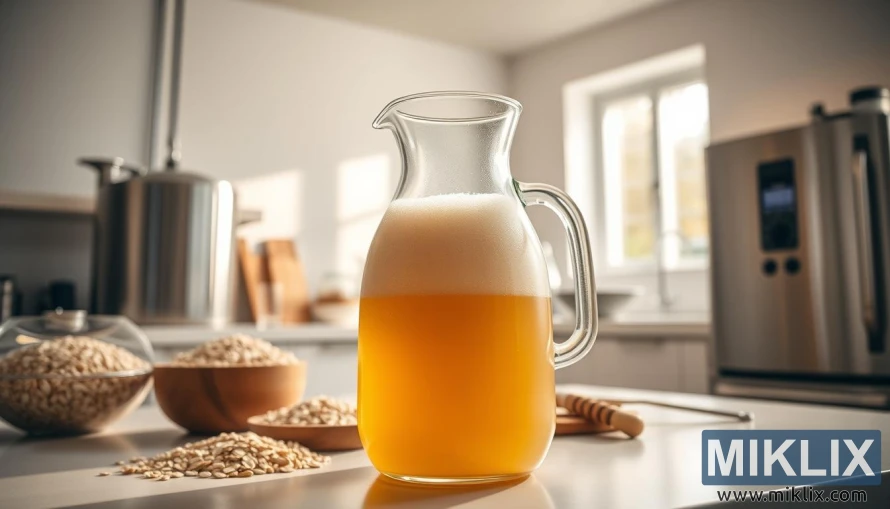
Key Takeaways
- Oats can reduce off-flavors and improve beer stability.
- Oats contribute to a silky mouthfeel in beer.
- Incorporating oats can increase viscosity and cause lautering issues.
- Optimal ratios and preparation methods are key for effective oat brewing.
- Oats can enhance yeast health during fermentation.
Understanding Oats in Beer Brewing History
Oats have been integral to beer production for centuries, with their use documented in various historical records. The history of oat brewing is a captivating narrative of innovation and tradition.
In medieval times, oats were prized for their ability to enhance beer's complexity and texture. Over the years, brewers have explored different oat varieties and techniques. This experimentation has led to the creation of distinct beer styles.
- Smooth, velvety texture
- Complex flavor profiles
- Improved head retention
Historically, oats were chosen for their nutritional benefits and availability. Today, modern brewers select from a range of oat types to meet specific brewing objectives.
The evolution of oat brewing has been shaped by technological advancements and shifting consumer tastes. Now, oats are a staple among craft brewers, valued for their versatility and unique contributions to beer.
Types of Brewing Oats Available
Oats are a versatile ingredient in beer brewing, coming in several forms. The choice of oats can significantly impact the character of the beer. Understanding the different types of oats available is key for brewers to achieve their desired outcomes.
Several types of oats are available for brewers, each with unique characteristics. Rolled oats are a popular choice due to their ease of use and the smooth texture they impart to the beer. They are made by steaming and then rolling oat groats to flatten them, making them easier to cook and incorporate into the brewing process.
Steel cut oats, on the other hand, are less processed. They are made by cutting oat groats into smaller pieces, retaining more of their texture. This type of oat adds a heartier, more robust quality to the beer.
Oat groats are the least processed form of oats used in brewing. They are the whole grains with the bran, germ, and endosperm intact. Using oat groats can result in a more complex flavor profile, as they contain more of the oat's natural nutrients and flavor compounds.
The characteristics of these oats vary, influencing the brewing process and the final product. Rolled oats are generally easier to work with, as they are more readily available and simpler to incorporate into recipes. Steel cut oats and oat groats, while more challenging to process, offer unique qualities that can enhance the beer's texture and flavor.
- Rolled oats: Easy to use, smooth texture.
- Steel cut oats: Less processed, robust texture.
- Oat groats: Whole grains, complex flavor.
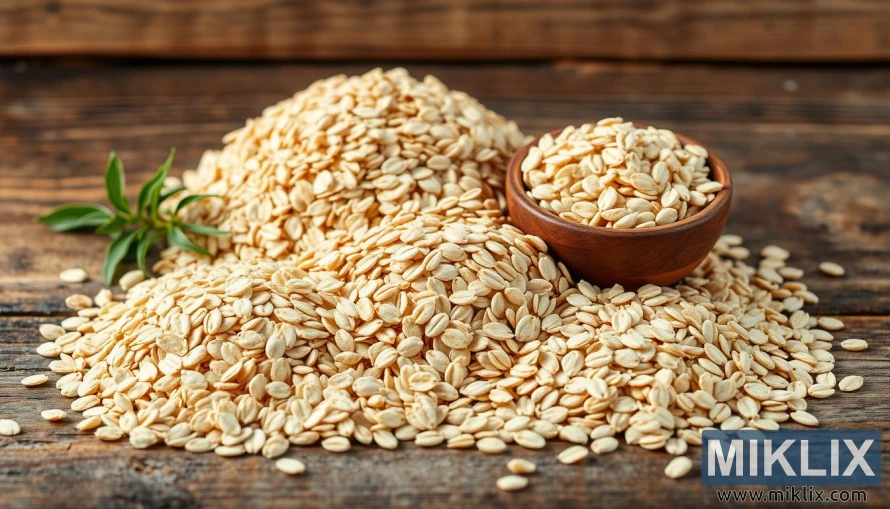
Benefits of Using Oats in Beer Production
Oats have become a staple in beer production, known for their ability to enhance mouthfeel and stability. Their inclusion in the brewing process significantly improves the beer's character.
The presence of beta-glucans in oats is a key benefit. These soluble fibers contribute to a silky texture and improved stability. This makes the beer smoother and more refined.
- Enhanced mouthfeel: Oats add a rich, velvety texture to beer.
- Improved stability: The beta-glucans in oats help to reduce haze and improve the overall stability of the beer.
- Increased complexity: Oats can contribute to a more complex flavor profile, adding depth and character to the beer.
By incorporating oats into their recipes, breweries can create unique and high-quality beers. The benefits of oat brewing make it an attractive option for brewers looking to innovate and differentiate their products.
Preparing Oats for Brewing
Unlocking the full flavor of oats in beer requires proper preparation. Oats add a unique texture and flavor when used as brewing adjuncts. Brewers must know the right techniques to prepare them.
Milling oats is the first step. It breaks down their structure, making starches available for conversion into fermentable sugars. A roller mill is best for its consistent grind and minimal fine flour production.
Once milled, oats are ready for mashing. This step involves mixing them with hot water to extract sugars and compounds like beta-glucans. Beta-glucans are key for beer's viscosity and mouthfeel.
The gelatinization temperature of oats is critical during mashing. It ranges from 120°C to 130°C (248°F to 266°F), varying by oat type and processing. Brewers must match their mashing temperature to gelatinize starches fully.
To optimize oat preparation, brewers should follow these best practices:
- Use a suitable milling technique to achieve the right consistency without over-processing the oats.
- Adjust the mashing temperature according to the gelatinization temperature of the oats.
- Monitor the mashing process to ensure optimal extraction of sugars and beta-glucans.
By adhering to these guidelines, brewers can enhance the quality and character of their oat-based beers.
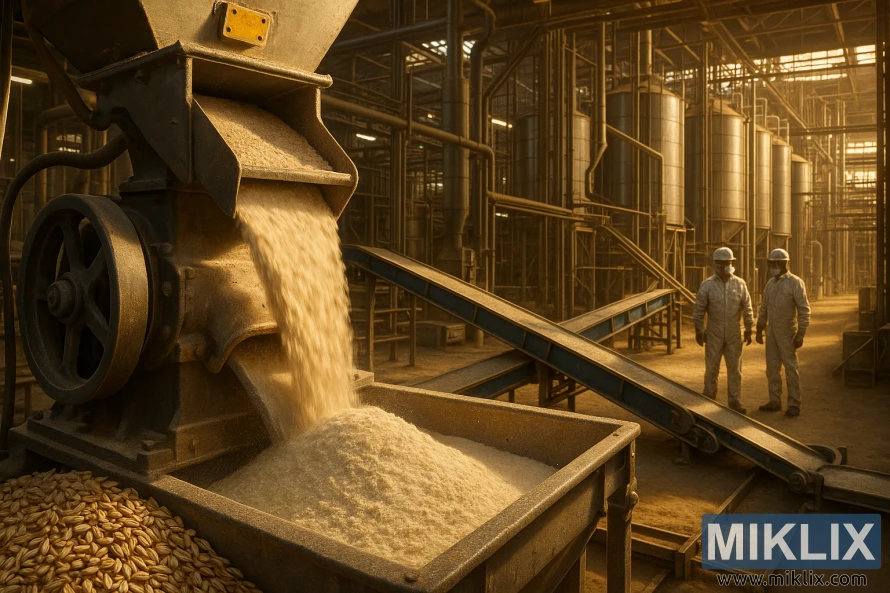
Optimal Ratios and Measurements
Brewers must carefully consider the proportion of oats to other ingredients when formulating a recipe. The optimal ratio of oats to other grains can vary significantly depending on the desired character of the beer.
When determining the ideal oat ratio, brewers should consider the type of beer they are trying to create. For example, a beer with a higher oat content may result in a smoother, more velvety texture. On the other hand, a lower oat content may preserve a crisper, more traditional beer profile.
To achieve the desired flavor and texture, brewers can experiment with different oat ratios. A general guideline is to start with a small percentage of oats, such as 5-10% of the total grain bill, and adjust to taste.
- Start with a small percentage of oats (5-10%) and adjust to taste.
- Consider the type of beer being brewed and the desired characteristics.
- Experiment with different oat ratios to achieve the optimal flavor and texture.
By carefully controlling the oat ratio and measuring ingredients accurately, brewers can create unique and delicious beers. These beers showcase the benefits of oats in brewing.
The Impact of Different Oat Varieties
Choosing the right oat variety is key for brewers aiming to craft specific flavors and aromas in their beers. Each oat variety brings unique traits to the brewing process. These traits can greatly affect the beer's taste and smell.
The wide variety of oats available lets brewers explore different flavors. Some oats might add a sweeter or nuttier taste, while others enhance the beer's smoothness. Knowing the characteristics of each oat variety is vital for achieving the desired beer style.
When picking an oat variety, brewers must think about the beer style they want to create. For instance, oats that add a rich, nutty flavor are perfect for stouts or porters. On the other hand, oats that offer a lighter, cleaner taste are better suited for pale ales. The goal is to pair the oat variety with the beer's style and desired flavor.
Some oats are chosen for their high oil content, which improves the beer's texture and mouthfeel. Others are picked for their distinct flavors, like a sweet or malty taste.
By carefully choosing the right oat variety, brewers can significantly improve their beer's quality and character. This leads to unique and complex flavors that cater to a broad range of tastes.
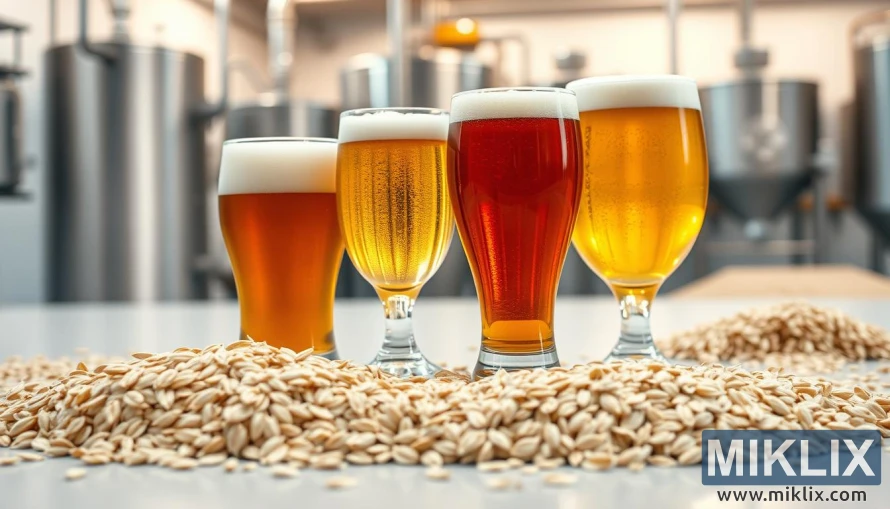
Common Challenges When Brewing with Oats
Oats can significantly enhance beer brewing, but they demand careful attention to avoid common issues. One major challenge is the increased wort viscosity, which complicates lautering.
The high beta-glucan content in oats makes the wort more viscous. This hinders the separation of liquid from solids during lautering. Such difficulties can slow down the brewing process and impact beer quality.
To tackle these challenges, brewers can employ several strategies. Adjusting the mash temperature, using enzymes to break down beta-glucans, and optimizing lautering are key. By understanding and addressing these challenges, brewers can craft high-quality oat-enhanced beers.
- Adjusting mash temperature to optimize enzyme activity
- Using enzymes to break down beta-glucans
- Optimizing the lautering process to minimize viscosity issues
Mashing Techniques for Oat-Based Brews
Brewing with oats requires a precise mashing technique, focusing on a beta-glucan rest to manage wort viscosity. Oats contain beta-glucans, complex carbs that can thicken the wort. This can cause filtration problems and alter the beer's character.
To mitigate this, brewers use a beta-glucan rest during mashing. This involves keeping the mash at a specific temperature, usually between 113°F and 122°F. This range activates enzymes to break down beta-glucans. The rest should last about 10 to 20 minutes.
Other mashing techniques are also vital for oat-based brews. The mash temperature and the ratio of oats to other grains greatly influence the final beer. For example, a higher mash temperature can make the beer sweeter and fuller. A lower temperature can result in a drier, more attenuated beer.
- Monitor the mash temperature closely to ensure it remains within the desired range.
- Adjust the ratio of oats to other grains based on the desired beer style and characteristics.
- Consider the type of oats used, as different varieties can affect the mashing process and the final beer.
By mastering these mashing techniques, brewers can fully exploit oats in their beers. This leads to unique and complex flavor profiles that elevate the drinking experience.
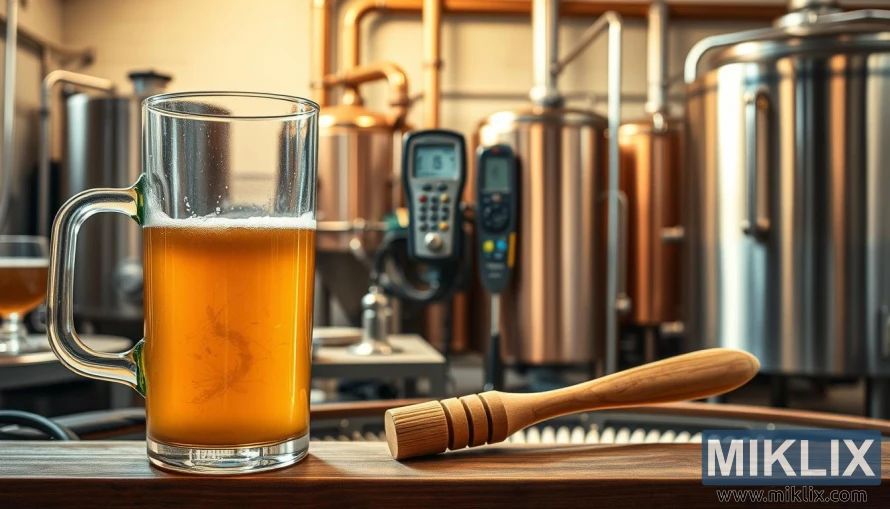
Fermentation Considerations with Oat-Heavy Worts
Oat-heavy worts pose unique challenges during fermentation. Brewers must address these issues to ensure a successful brew. The presence of oats can impact yeast health and fermentation performance. It's essential to consider yeast selection and nutrition.
Understanding how oats affect fermentation is critical. Oats can make the wort more complex, leading to a robust fermentation. Yet, this complexity also puts yeast under additional stress.
To optimize fermentation with oat-heavy worts, brewers should focus on several key factors:
- Yeast selection: Choosing a yeast strain that is tolerant of the stresses associated with oat-heavy worts is vital.
- Nutrient supplementation: Ensuring that the wort is adequately supplemented with nutrients can help support yeast health.
- Fermentation temperature control: Maintaining optimal fermentation temperatures is critical for healthy yeast performance.
- Monitoring fermentation progress: Regularly checking on fermentation progress can help identify any issues early on.
By carefully managing these factors, brewers can optimize the fermentation process with oat-heavy worts. This ensures a healthy fermentation and contributes to the overall quality of the final beer product.
Popular Beer Styles Enhanced by Oats
Oats have become a staple in various beer styles, boosting their texture and character. They are most notable in stouts and porters, adding a silky mouthfeel and improving stability.
Stouts and porters are the most popular styles benefiting from oats. They introduce a smooth, velvety texture that complements the rich, roasted flavors. Oats also enhance head retention and drinkability.
Other styles, like oatmeal stouts and some Belgian ales, also use oats. This showcases oats' versatility in brewing. They add complexity and depth to these beers.
- Oatmeal stouts: Known for their smooth, creamy texture and rich flavor.
- Porters: Benefit from the added complexity and silky mouthfeel oats provide.
- Stouts: Oats enhance the overall character and stability of the beer.
By adding oats to their recipes, brewers can craft beers with unique textures and flavors. These appeal to a broad range of palates.
Quality Control and Testing Methods
Oat-based beers require strict quality control to ensure consistency and excellence. This involves several key steps, from monitoring viscosity to fermentation performance. These steps are essential for guaranteeing the quality of the final product.
Viscosity monitoring is a critical aspect of quality control. Oats can greatly affect the wort's viscosity, impacting the beer's texture and mouthfeel. Brewers must closely monitor this parameter to achieve the desired beer characteristics.
- Regular viscosity measurements to ensure consistency
- Fermentation monitoring to track the progress of fermentation
- Sensory evaluations to assess the flavor, aroma, and overall character of the beer
Implementing these quality control measures ensures oat-based beers meet the highest standards. This approach guarantees quality and consistency in every batch.
Understanding the impact of different oat varieties on brewing is also vital. This knowledge helps brewers make informed decisions about the type and proportion of oats to use. It's a key factor in achieving the desired beer characteristics.
Equipment Modifications for Oat Brewing
Equipment modifications are key in oat brewing, affecting the quality of the final product. When brewing with oats, it's vital to consider the necessary adjustments for optimal performance. This is true for mash tuns and lauter tuns.
Oats can pose challenges in brewing, like increased viscosity and lautering issues. To overcome these, brewers might need to modify their equipment. This ensures efficient mash separation and lautering.
- Adjusting the mash tun to accommodate the thicker oat mash, potentially by increasing the tun's capacity or modifying its design for better grain bed management.
- Enhancing the lauter tun's ability to handle the increased viscosity of oat-based worts, possibly through the use of improved lautering mechanisms or additional filtration systems.
- Implementing pre-mashing or cereal mashing techniques to better gelatinize the oats before adding them to the main mash.
Brewers also need to think about the material and design of their equipment. This is to prevent issues like corrosion or sticking, which oats can worsen. For example, using equipment with a smoother finish or applying coatings can help mitigate these risks.
By making the necessary equipment modifications, brewers can optimize their oat brewing process. This leads to better extraction, improved lautering, and ultimately, a higher quality final product.
Conclusion
Incorporating oats into beer brewing can greatly enhance the final product's character. It adds a silky mouthfeel and improves stability. Yet, brewers face challenges like increased viscosity and lautering issues.
Understanding the benefits and challenges of oat brewing is key. This article provides insights to help brewers successfully use oats in their recipes. It emphasizes the importance of proper preparation, optimal ratios, and suitable mashing techniques for high-quality beers.
Oats bring unique qualities to beer, giving brewers a competitive edge in the craft brewing world. As brewers experiment with oats, they open up vast possibilities for innovative beer styles. Oat brewing is an exciting area of exploration, full of promise.
Further Reading
If you enjoyed this post, you may also like these suggestions:
- Using Maize (Corn) as an Adjunct in Beer Brewing
- Using Rice as an Adjunct in Beer Brewing
- Using Rye as an Adjunct in Beer Brewing
